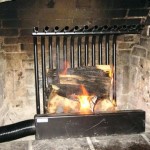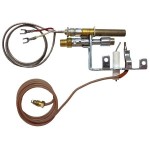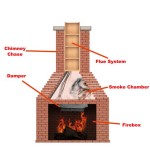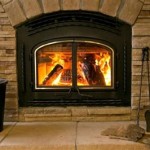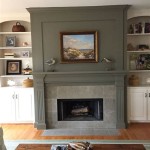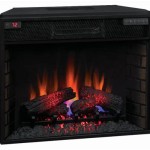Install Gas Fireplace Insert Cost: A Comprehensive Guide
A gas fireplace insert represents a significant home improvement investment, offering enhanced heating efficiency, improved aesthetics, and increased home value. Understanding the factors influencing the overall cost is paramount before embarking on such a project. This article delineates the various cost components associated with installing a gas fireplace insert, providing a detailed overview for homeowners considering this upgrade.
The initial cost of a gas fireplace insert constitutes a substantial portion of the total expense. These units range widely in price, primarily based on factors such as heating capacity (measured in BTUs), size, features, brand reputation, and aesthetic design. Venting requirements also play a crucial role in selecting an appropriate model. Direct vent models, which exhaust directly through an exterior wall, typically cost more than vent-free options. The quality of materials used in construction, such as the type of metal and glass, also impacts the purchase price.
Homeowners should allocate a budget for the insert itself ranging from $2,000 to $6,000 or more, depending on their specific requirements and preferences. Lower-end models offer basic functionality, while higher-end options incorporate advanced features such as remote controls, programmable thermostats, realistic flame patterns, and integrated blowers for improved heat distribution. Careful consideration of these features in relation to the budget will help determine the most appropriate choice.
Factors Influencing the Cost of the Gas Fireplace Insert
Several key factors directly influence the cost of the gas fireplace insert itself. These include the BTU output, venting system, and aesthetic features.
BTU Output: Higher BTU ratings translate to greater heating capacity. Larger rooms or homes requiring significant supplemental heating will necessitate inserts with higher BTU outputs, which consequently command a higher price. Carefully assessing the heating needs of the space to be heated is essential to avoid overspending on an unnecessarily powerful unit.
Venting System: Gas fireplace inserts require a venting system to expel exhaust gases safely. Direct vent systems, while more costly upfront, offer greater flexibility in installation location and often provide superior combustion efficiency. Vent-free options, which do not require venting, may be less expensive to purchase initially but may be subject to local building codes and can potentially impact indoor air quality if not properly maintained and used.
Aesthetic Features: The visual appeal of a gas fireplace insert significantly impacts its cost. Models with realistic flame patterns, decorative logs, and customizable ember beds command a premium. Features such as remote controls, programmable thermostats, and integrated blowers add to the convenience and functionality, but also increase the price.
Installation costs represent another significant component of the overall expense. The complexity of the installation process depends on factors such as the existing fireplace structure, the venting system requirements, and the proximity of a gas line. Hiring a qualified and licensed professional installer is crucial to ensure safe and proper operation.
Installation typically involves preparing the existing fireplace opening, running gas lines (if not already present), installing the venting system, connecting the insert, and testing for leaks. The cost of labor can vary based on the complexity of these tasks and the hourly rate of the installer. Homeowners can anticipate installation costs ranging from $500 to $2,000 or more, depending on the specific project requirements.
Additional costs might arise if modifications to the existing fireplace structure are required. This could involve widening the opening, reinforcing the hearth, or addressing structural deficiencies. Permits may also be required depending on local building codes. It is important to factor in these potential costs when budgeting for the project.
Assessment of Installation Requirements and Associated Costs
A thorough assessment of existing infrastructure and installation requirements is paramount for accurate cost estimation. This involves evaluating the existing fireplace, determining venting needs, and assessing gas line accessibility.
Existing Fireplace Assessment: The condition of the existing fireplace significantly impacts installation costs. An older fireplace may require repairs to the chimney or firebox before an insert can be safely installed. Structural issues, such as cracks or crumbling masonry, must be addressed. Ensuring the fireplace opening is properly sized for the chosen insert is also essential.
Venting Needs: Selecting the appropriate venting system is crucial for safe and efficient operation. Direct vent systems typically require the installation of vent pipes through an exterior wall or roof. Vent-free systems, while simpler to install, may have limitations based on local codes and indoor air quality considerations. The complexity of the venting installation will directly impact the cost.
Gas Line Accessibility: If a gas line is not already present near the fireplace, running a new line will add to the installation cost. This involves connecting to the main gas line and routing the pipe to the fireplace location. The distance and complexity of the gas line run will influence the overall expense. It is important to ensure that the gas line is properly sized to accommodate the gas fireplace insert's BTU requirements.
Beyond the insert and installation costs, homeowners should factor in ongoing operating expenses. Gas fireplace inserts consume natural gas or propane, and the cost of fuel will vary depending on local utility rates and usage patterns. Regular maintenance, such as cleaning and inspection, is also necessary to ensure optimal performance and safety. A professional inspection is recommended annually to check for leaks, clean the burner, and inspect the venting system.
Homeowners should also consider the long-term cost savings associated with a gas fireplace insert. Gas inserts are typically more energy-efficient than traditional wood-burning fireplaces, resulting in lower heating bills. Additionally, they eliminate the need to purchase and store firewood, saving both time and money. The convenience and ease of use of a gas fireplace insert can also contribute to increased home comfort and enjoyment.
Long-Term Operating Costs and Potential Savings
Beyond the initial investment, ongoing operating costs and potential long-term savings must be carefully considered.
Fuel Costs: The cost of natural gas or propane will vary depending on location and market conditions. Estimating the anticipated usage based on the BTU rating of the insert and the local climate will help project annual fuel expenses. Comparing gas prices from different providers can also help minimize these costs.
Maintenance Costs: Regular maintenance, including cleaning and inspection, is essential for safe and efficient operation. Annual professional inspections are recommended to identify and address potential issues. Budgeting for these maintenance costs will help ensure the longevity and reliability of the insert.
Energy Savings: Gas fireplace inserts are generally more energy-efficient than traditional wood-burning fireplaces. This improved efficiency can translate to significant savings on heating bills, particularly during the winter months. The convenience of a gas insert can also reduce reliance on central heating systems, further contributing to energy savings.
In summary, the cost of installing a gas fireplace insert involves several interconnected factors. The price of the insert itself, the complexity of installation, ongoing operating costs, and potential long-term savings all contribute to the overall investment. By carefully evaluating these factors and obtaining multiple quotes from qualified installers, homeowners can make informed decisions and achieve a successful and cost-effective gas fireplace insert installation.

How Much Does A Gas Fireplace Cost Fireplaces Direct Learning Center

How Much Does A Gas Fireplace Cost Fireplaces Direct Learning Center

Gas Fireplace Insert Cost Forbes Home

Estimated Page Fireplaces Stoves Inserts Wood Gas Pellet

Gas Fireplace Cost Guide Unit Add Ons Installation More

How Much Does It Cost To Install A Gas Fireplace Homeserve Usa

How Much Does A Gas Fireplace Insert Cost To Install 2024

Gas Fireplace Installation Cost Dbs Inc

Estimated Page Fireplaces Stoves Inserts Wood Gas Pellet

How Much Does A Gas Fireplace Insert Cost To Install 2024
Related Posts

